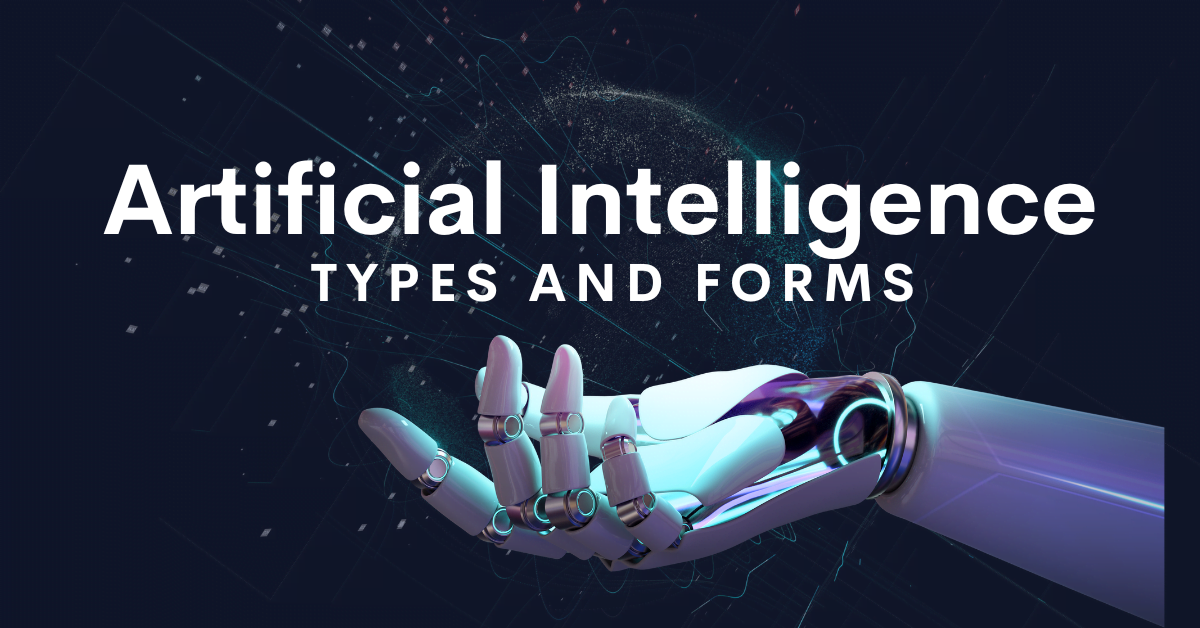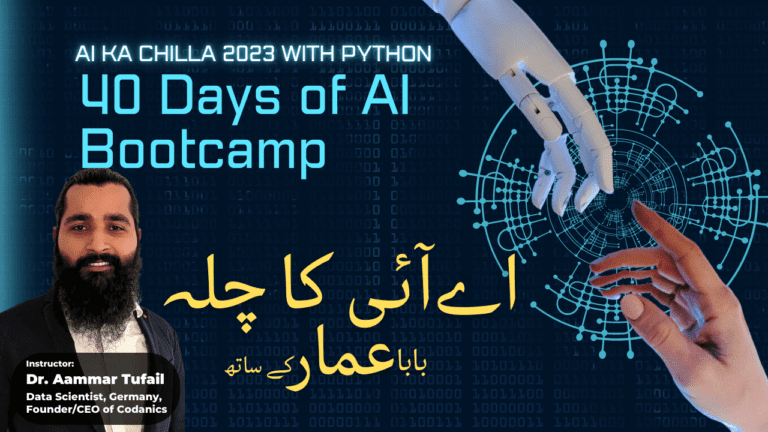Assalamualaikum dosto! Aaj hum baat karenge ek bohat hi mazedaar aur har kisi ke zabaan par hone wali technology, ‘Artificial Intelligence’ yaani AI ke baare mein.
AI Kya Hai? 🤖
‘Artificial Intelligence’ (AI) woh branch hai computer science ki jahan computers ya machines ko aise program kiya jata hai ke woh insani tarah soch sakte hain, samajh sakte hain, aur decisions le sakte hain. Matlab, machine ko aise train kiya jata hai ke woh insani tarah kaam kar sake bina kisi insaan ke madad ke.
AI ka Istemal Kahan Hota Hai? 🌍
- Mobile Apps: Aapke phone mein jo voice assistants hain jaise Siri ya Google Assistant, woh AI ke zariye chalte hain.
- Gaming: Modern games mein woh characters jo khud decisions lete hain, woh AI ke zariye control kiye jate hain.
- Healthcare: Bimariyon ki pehchan ya patient ki monitoring mein AI madad karta hai.
- Automobiles: Khud chalne wale cars jaise Tesla, woh bhi AI par mabni hain.
Toh Dosto, AI Kyun Zaroori Hai? 💡
AI ka zamana aagaya hai! Yeh technology humari zindagi ko asaan bana rahi hai aur humein naye tareeqe se kaam karne ki salahiyat de rahi hai. Iske istemal se hum zyada efficient, smart, aur tezi se kaam kar sakte hain.
Artificial Intelligence 🤖: Kitne Qisam Ke Hote Hain Aur Kya Kaam Aate Hain?
Hum sab ne ‘Artificial Intelligence’ yaani AI ke bare mein suna hai, lekin kya aapko maloom hai ke yeh kitni mukhtalif qisam ke hote hain aur har qisam ka kya kaam hai?
1. Narrow ya Weak AI (ANI): Specific Task ke Liye Expert 🎯
- Yeh woh AI hai jo sirf ek khaas task ya kaam ke liye design kiya gaya hota hai.
- Examples: Apple ke Siri jaise virtual assistants, chatbots, aur tasveer pehchanne wale systems.
- Matlab, yeh woh cricketers hain jo sirf batting ya sirf bowling mein mahir hain.
2. General AI (AGI): Har Kaam Mein Khoobsurat Perform Karne Wala ⭐
- AGI woh AI hai jo insani soch aur samajhne ki salahiyat rakhta hai, har tarah ke kaam mein.
- Filhal yeh sirf theoretical hai aur abhi tak real mein nahi bana.
- Matlab yeh woh cricketer hai jo batting, bowling aur fielding mein bhi top class hai.
3. Super AI (ASI): AI ka Baap – Jo Har Field Mein Insaan Se Behtar Hai 🚀
- ASI woh AI hai jo har practical field mein insani intelligence se behtar hai.
- Jaise AGI, ASI bhi abhi sirf theoretical hai aur reality mein exist nahi karta.
Mazeed Iqsaam 🧐:
- Reactive Machines: Basic machines jo past memories ya information ko save nahi karte. Jaise IBM ka Deep Blue jo ke chess champion Garry Kasparov ko haraya tha.
- Limited Memory AI: Yeh systems past ki information ko use karte hain lekin sirf temporary taur par. Aaj kal ke zyadatar AI, jaise khud chalne wale cars, is category mein aate hain.
- Theory of Mind AI: AI ka yeh level emotions aur mukhtalif entities ke interactions ko samajhne ki salahiyat rakhta hai. Yeh abhi sirf sochne ka level hai.
- Self-aware AI: Yeh woh AI hai jo khud ko samajhne aur apni shuurat pehchanna sakta hai. Yeh abhi theoretical hai aur reality mein exist nahi karta.
Toh Dosto, Kyun Zaroori Hai Yeh Samajhna? 📚
AI ke yeh tamam qisam samajhna researchers, practitioners, aur policymakers ke liye bohat zaroori hai. Har qisam ke AI ke opportunities aur challenges alag hote hain. Is field ko samajhna aur explore karna humare liye future ki tayyari mein madad karta hai.
🚀 Aakhri Alfaz: AI ka safar abhi shuru hua hai, aur yeh duniya ko badalne wala hai. Aap bhi is safar mein shamil hokar, naye mauqe aur taqatwar tools ko explore kar sakte hain.
Kia ap AI Seekhna Chahtay hyn? tu ap Hamaray course main free main enroll ho k seekh saktay hyn.
Acha phir, Milte hain agle blog mein! 🌙👋







well explained. kiya kehne sirrr!
Well acknowledged blog
narrow AI and general AI are applicable others are on the way
Alhamdulillah, understand the concept of AI and its types very easily🤗
Done
Thanks for the stuff you are providing to the learners.
Allah Bless you Sir.
done
Done Sir
Done
done sir
done…….
thank you
thank u sir for explaining
here are the types
narrow ai
general ai
supper ai
reactive ai
limited memory ai
theory of mind
self aware
Useful blog!
done…………….
well knowledge.,
jee Behtar Sir
AI is a part of our lives and has become another social need of humans.
done
it was very intresting thanks sir Jazakumllah khran
Sir machine ko emotions kese ayeinge,,, 🤔😂 in theory of minds
it is possible due to ai
Jizakallah
Understood Uses & types of AI.
Very easy and helpful.
Very easy, informative & helpful content.
May be in next 10 years ASI becomes a reality. It’s a bit scary
Acha huwa abhi Narrow AI ka daur hy. Self aware AI buhat darawna hai
great contents
Udu language mein smjna bohut asan hogaya hn Shukria
Done reading
Narrow Ai
General Ai
Super Ai
all done
helpful
Thank u sir
Libraries for Mathematics and Statistics:
Numpy: For numerical operations and arrays.
Scipy: Provides scientific and technical computing tools.
SymPy: Symbolic mathematics library.
Matplotlib: Used for creating visualizations.
Scikit-Learn: For machine learning tasks.
Statsmodels: For statistical modeling.
PyTorch and TensorFlow: Deep learning frameworks.
Numba: Optimizes Python code for speed.
Pandas: Data manipulation and analysis.
Python Libraries for Data Science:
Includes libraries like NumPy, Pandas, and tools for deep learning like Keras and TensorFlow, essential for data science tasks.
Python Libraries for Data Analysis:
Libraries like Bokeh, Plotly, and scikit-learn used for data analysis tasks.
Python Libraries for Machine Learning:
Libraries like Scikit-Learn, TensorFlow, and PyTorch, specifically focused on machine learning tasks.
Python Libraries for Deep Learning:
TensorFlow, PyTorch, and other libraries for deep learning tasks.
Python Libraries for Web App Development and Frameworks:
Django, Flask, and others used for web app development in Python.
VS Code Python Extensions:
Python (Microsoft): Official Python extension for VS Code.
Lightrun: Enhances code debugging capabilities.
Python Preview: Allows you to preview Python files.
Better Comments: Improves code commenting.
Python Test Explorer: Facilitates testing in Python projects.
Python Indent: Helps with code indentation.
Python Snippets 3: Provides Python code snippets.
Bracket Pair Colorizer 2: Helps with code readability by colorizing brackets.
VS Code Extensions for Data Science and Data Analysis:
Pylance: Enhances language support for Python.
Jupyter: Supports Jupyter notebooks.
GitLens: Provides Git version control integration.
Excel Viewer: Allows you to view Excel files within VS Code.
Rainbow CSV: Improves CSV file handling.
Python Indent: Assists with code indentation.
Indent-rainbow: Colorizes code indentation for clarity.
NICE
# Different Kinds of Artificial Intelligence
## What is AI?
Artificial Intelligence (AI) means teaching computers to be smart like humans. It’s about making computers do things that usually need human thinking, like learning, solving problems, understanding language, and making decisions. AI helps machines become clever and capable of getting better at tasks on their own. It’s like giving computers a brain to think and learn, so they can work on their own without people telling them what to do.
Easy to understand and read💯
Valuable Information 😀
Yes, Great!
Thanks ustadjee
kmalll smjatin hain ap baba g
allah pak ap ko hamasha khush raky ameen
Well Explained!
Zabardast sir. Bohat hi achha style hai parhane ka.
its very informative to read these blogs
Thanks for sharing the valuable info with us. It is really insightful.
Kia AI in future logon ki job kha jayegi ya asaaani kregi mere khayaal se wo log wo apnay ap ko time k sth update nhi krengy unko mushkil hugi jazam allah babaji Ammar.aur baki logon bhj btana ap log kia sochty hn is baray m?
Thanku! All concepts clear.
nice blog in AI feature
understandable
Acha samjhaya hy. Jazak Allah
Mashallah sir Allah Pak ap k ilam m barkat de
very easy to understand
Understood
Good
Libraries for Mathematics and Statistics:
Numpy: For numerical operations and arrays.
Scipy: Provides scientific and technical computing tools.
SymPy: Symbolic mathematics library.
Matplotlib: Used for creating visualizations.
Scikit-Learn: For machine learning tasks.
Statsmodels: For statistical modeling.
PyTorch and TensorFlow: Deep learning frameworks.
Numba: Optimizes Python code for speed.
Pandas: Data manipulation and analysis.
Python Libraries for Data Science:
Includes libraries like NumPy, Pandas, and tools for deep learning like Keras and TensorFlow, essential for data science tasks.
Python Libraries for Data Analysis:
Libraries like Bokeh, Plotly, and scikit-learn used for data analysis tasks.
Python Libraries for Machine Learning:
Libraries like Scikit-Learn, TensorFlow, and PyTorch, specifically focused on machine learning tasks.
Python Libraries for Deep Learning:
TensorFlow, PyTorch, and other libraries for deep learning tasks.
Python Libraries for Web App Development and Frameworks:
Django, Flask, and others used for web app development in Python.
VS Code Python Extensions:
Python (Microsoft): Official Python extension for VS Code.
Lightrun: Enhances code debugging capabilities.
Python Preview: Allows you to preview Python files.
Better Comments: Improves code commenting.
Python Test Explorer: Facilitates testing in Python projects.
Python Indent: Helps with code indentation.
Python Snippets 3: Provides Python code snippets.
Bracket Pair Colorizer 2: Helps with code readability by colorizing brackets.
VS Code Extensions for Data Science and Data Analysis:
Pylance: Enhances language support for Python.
Jupyter: Supports Jupyter notebooks.
GitLens: Provides Git version control integration.
Excel Viewer: Allows you to view Excel files within VS Code.
Rainbow CSV: Improves CSV file handling.
Python Indent: Assists with code indentation.
Indent-rainbow: Colorizes code indentation for clarity.
It’s very useful for the future of our society
It’s very useful
👏👏Bht khoob sir g
“`📝 First assignment:“`
*Types of ai*
Narrow AI
Generative AI
Super AI
Further types ###
Reactive Machine.
Limited Memory.
Theory of Mind.
Self-Aware.
-_-_-_-_-_-_-_-_-_–_-_-_-_-_-_
📝 Second assignment:
*Data science and Data analyst*
data analysts and data scientists both work with data, the main difference lies in what they do with it.
*Data analysts* examine large data sets to identify trends, develop charts, and create visual presentations to help businesses make more strategic decisions.
*Data scientists* , on the other hand, design and construct new processes for data modeling and production using prototypes, algorithms, predictive models, and custom analysis
-_-_-_-_-_-_-_-_-_–_-_-_-_-_-_
📝Third Assignment
Important python libraries for data science:
TensorFlow
NumPy
SciPy
Pandas
Matplotlib
Keras
SciKit-Learn
PyTorch
Scrapy
BeautifulSoup
LightGBM
ELI5
Theano
NuPIC
Ramp
Pipenv
Bob
PyBrain
Caffe2
Chainer
-_-_-_-_-_-_-_-_-_–_-_-_-_-_-_
📝Important Vs code extension for data science:
GitHub Copilot
Python
Pylance
Python Indent
Indent-rainbow
Jupyter
Jupyter Notebook Renderers
R
Julia
DVC
GitLens
Todo MD
good sir
Done
This article is very knowledgeable and easy to understand what is AI.
ASSIGNMENT DAY#3:
ASSIGNMENT#1:
Libararies for mathematics and statistics:
01:Numpy
02:scipy
03:sympy
04:matplotib
05:scikit_learn
06:statsmodels
07:pytorch
08:tensor flow
09:numba
10:pandas
PYTHON LIBRARIES FOR DATA SCIENCE
01:NumPy
02:Keras
03:Pandas
04:PyTorch
05:SciPy
06:Scikit-Learn
07:TensorFlow
08:Matplotlib
09:Seaborn
10:Theano
[ PYTHON LIBRARIES FOR DATA analysis
01:bokeh
02:plotly
03:scikit_learn
PYTHON LIBRARIES FOR Machine Learning
01:Numpy
02:Scipy
03:Scikit-learn
04:Theano
05:TensorFlow
06:Keras
07:PyTorch
08:Pandas
09:Matplotlib
: PYTHON LIBRARIES FOR DEEP LEARNING
1. TensorFlow
2. Pytorch
3. NumPy
4. Scikit-Learn
5. SciPy
6. Pandas
7. Microsoft CNTK
8. Keras
9. Theano
10. MXNet
PYTHON LIBARARIES FOR WEB APP DEVELOPMENT AND WEB APP FRAMEWORK DEVELOPMENT :
1. Django
2. TurboGears
3. Numpy
4. Pandas
5. Matplotlib
6. Flask
7. Web2py
8. Bottle
9.CherryPy
10. Falcon
ASSIGNMENT#2:
VS Code Python Extensions
Python (Microsoft)
Lightrun.
Python Preview.
Better Comments.
Python Test Explorer.
Python Indent.
Python Snippets 3.
Bracket Pair Colorizer 2 (CoenraadS)
VS Code extensions for data science AND DATA ANALYSIS
Pylance. Pylance is an extension that provides performant language support. …
Jupyter. …
GitLens. …
Excel Viewer. …
Rainbow CSV. …
Python Indent. …
Indent-rainbow.
Thanks for information sir
Your authenticity allows people to feel comfortable being themselves around you. That’s a special quality.
very helpful thanks
asslam o allakam Sir, It would have been more helpful if you had written it in English
nice blog
Very Informative
Urdu main prh k boht ache tarha samj ati hai very good baba ji
In Sha Allah me b is safar ka hissa banaonga aur dil laga kar hard work karonga
Great understanding
In early nineties, when mobile services were launched , they were just voice communicating devices. But now you carry a mini world with you. and perform multiple tasks through it. So is AI right away . AI will obsolete many things and will introduce many magical and miraculous things, which many of world population is not anticipating.
Ummmddaaaaa
zabardast….
Sir Nice
Well explained.
Amazing explanation
Assignment)1: Types of Artificial Intelligence
Artificial Intelligence can be divided based on capabilities and functionalities.
There are three types of Artificial Intelligence-based on capabilities –
Narrow AI
General AI
Super AI
Under functionalities, we have four types of Artificial Intelligence –
Reactive Machines
Limited Theory
Theory of Mind
Self-awareness
Fantastic introduction to Artificial Intelligence (AI)…. It’s concise and provides a clear understanding of what AI is and how it’s impacting our lives… I particularly liked how you explained the different types of AI, from Narrow AI to Super AI, in simple terms..The cricket analogies for each type of AI were a clever way to make it relatable. You’ve also highlighted the importance of understanding AI’s various forms, which is crucial in today’s world.. Great job on breaking down a complex topic into an easy-to-understand blog post.
Sir AI master to he lekin without dimagh WALA I mean. With no brain🧠 , Or wo kaam hi tab Karta he jab use data mile.
Or data bhe Jo ke fully process , cleaned and accurate ho take prediction sahi hoon.
Unprocess or uncleaned data but ghalt prediction Karwa skti he.
So AI andha he . Bahra he data K bina So data science zaroori he.
Nice
keep it up!
I’ll read and understand easily alhamdulillah
Is blog ko par k mujhy sumajh aya k mai nay theek AI ki types ko explore kiya tha . But kyon k abhe kuch types theoretical hain so I was confused k mai theek bhe sumajh rahe hun k nahi but app k blog k baid sumajh aya k kuch tpes practically work kar rahe hain aur kuch pe theoretical kam ho reha hai. thanks and Jazak Allah Khair
Nice Sir!
Assignment:
Type -1 Based on Capabilities
a) Narrow AI- Perform only dedicated task with intelligence. This is the most common and currently available AI and termed as weak AI which can fail in unpredictable ways if goes beyond limit. Eg IBM Watson, Apple Siriis
b) General AI is a type of intelligence which could perform any intellectual task with efficiency like a human, currently there is no such system that can classified under general AI and research is now focused on developing machines with general AI
c) Super AI is a level of Intelligence of Systems at which machines could surpass human intelligence, and can perform any task better than human with cognitive properties. It is an outcome of general AI and is hypothetical concept
Type 2 Based on Functionality
a) Reactive Machines: does not store memories and past experiences for future actions. Focus on current scenarios and react on it as per best possible best action eg IBM deep Blue system
b) Limited memory: can store past experiences or some data for short time eg, self driving cars
c) Theory of mind: understand human emotions, people beliefs and be able to interact socially like humans
d) Self Awareness: future of AI, super intelligent and will have their own consciousness, sentiments and self awareness., hypothetical concept which aim to be smarter than human mind
Very insightful
Day 3
Assignment 1: everyday use Python libraries?
NumPy
pandas
matplotlib
Seaborn
scikit-learn
TensorFlow
Keras
PyTorch
OpenCV
BeautifulSoup
Requests
Django
Flask
SQLAlchemy
NLTK (Natural Language Toolkit)
SciPy
Statsmodels
Pillow (PIL)
NetworkX
Gensim
Assigment #2 Extentions for python in Vs code ?
Python
Python Docstring Generator
AutoDocstring
Python Test Explorer
Visual Studio IntelliCode
Pylance
Jupyter
Python Indent
Code Runner
Python Language Server
GitLens
Django
Flask Snippets
MagicPython
Docker
Black box AI
Jellyfish
Prettier …
Done with the reading material👍
Excellent Teaching Method
Example of Cricketers 👍
Mere khayal me current AI-2023 bhut jald Super-AI me badal jayegi due to rapidly generating new data.
read, really creative way
Very benefit for us
ماشااللہ
اللہ برکت دے آمین
thanku
Understandable, interactive and easy to remember. Kudos to you Sir.
easy to understand. thanks sir.
also attach pictures in these articles as you explained in class.
Done READING
Muhammad Ali Naqvi
Readed, informative
effective teaching baba g zabardast
Bohat he Khubsorat bataya ha sub kuch apne. Jazak ALLAH Khair
Already read. Asaani se samjh aa gai
reading done sir
Assignment one:::
(Types Of Learning In Artificial Intelligence)
Artificial Narrow Intelligence
Artificial General Intelligence
Artificial Super Intelligence
Types Of AI
Reactive Machines AI
Limited Memory AI
Theory Of Mind AI
Self-aware AI
Artificial Intelligence (AI) has several subsets, i.e:
Machine Learning
Deep Learning
Natural Language processing
Expert System
Robotics
Assignment 2:::
(Data Science vs Data Analytics)
Data analysts examine large data sets to identify trends, develop charts, and create visual presentations to help businesses make more strategic decisions.
Data scientists, on the other hand, design and construct new processes for data modeling and production using prototypes, algorithms, predictive models, and custom analysis.
Working in Data Analytics
The responsibility of data analysts can vary across industries and companies, but fundamentally, data analysts utilize data to draw meaningful insights and solve problems. They analyze well-defined sets of data using an arsenal of different tools to answer tangible business needs: e.g. why sales dropped in a certain quarter, why a marketing campaign fared better in certain regions, how internal attrition affects revenue, etc.
Data analysts have a range of fields and titles, including (but not limited to) database analyst, business analyst, market research analyst, sales analyst, financial analyst, marketing analyst, advertising analyst, customer success analyst, operations analyst, pricing analyst, and international strategy analyst. The best data analysts have both technical expertise and the ability to communicate quantitative findings to non-technical colleagues or clients.
Skills and Tools
Top data analyst skills include data mining/data warehouse, data modeling, R or SAS, SQL, statistical analysis, database management & reporting, and data analysis.
Working in Data Science
Data scientists, on the other hand, estimate the unknown by asking questions, writing algorithms, and building statistical models. The main difference between a data analyst and a data scientist is heavy coding. Data scientists can arrange undefined sets of data using multiple tools at the same time, and build their own automation systems and frameworks.
Skills and Tools
These include machine learning, software development, Hadoop, Java, data mining/data warehouse, data analysis, python, and object-oriented programming
Roles and Responsibilities
Data scientists are typically tasked with designing data modeling processes, as well as creating algorithms and predictive models to extract the information needed by an organization to solve complex problems.
Assignment 3:::
(LLM details)
top 12,
1. GPT-4 (OpenAI)
– Feature: Multimodal, improved factuality
– Fees: $20 for ChatGPT Plus
– Cost: Paid
2. Cohere
– Feature: Enterprise-focused, accuracy
– Fees: $15 per 1 million tokens
– Cost: Paid
3. Claude v1 (Anthropic)
– Feature: High performance, 100k token context
– Fees: Not specified
– Cost: Not specified
4. PaLM 2 (Bison-001, Google)
– Feature: Multilingual, commonsense reasoning
– Fees: Not specified
– Cost: Not specified
5. LLaMA (Meta)
– Feature: Open-source, research use
– Fees: Free for research
– Cost: No cost
6. Vicuna 33B (LMSYS)
– Feature: 33B parameter model
– Fees: Free
– Cost: No cost
7. Guanaco-65B (Open-source)
– Feature: Fine-tuned performance
– Fees: Free
– Cost: No cost
8. WizardLM
– Feature: Complex instruction following
– Fees: Free
– Cost: No cost
9. 30B-Lazarus (CalderaAI)
– Feature: Improved benchmark performance
– Fees: Free
– Cost: No cost
10. MPT-30B (Mosaic ML)
– Feature: Open-source, 8K token context
– Fees: Free
– Cost: No cost
11. Falcon (TII)
– Feature: Open-source
– Fees: Free for commercial use
– Cost: No cost
12. GPT-3.5 (OpenAI)
– Feature: General-purpose, fast response
– Fees: Free
– Cost: No cost .
Great Sir ,
How you Manage Your Time ?
Types Of AI :
There Are 7 Types of Ai
1. Narrow Ai
2. General Ai
3. Strong Ai
4. Reactive Machines
5. Limited Memory
6. Theory Of Mind
7. Self Awareness
What Is Difference Between DA And DS
Data scientist is a person who understand client business and data problem. He understand the data from a business point of view . His work is to give the most accurate predictions . A data scientist fosters decision-making in the company
Data analyst is person who handle only client data deals with data manipulation , report creation , he deals with technicality of data . He will not understand business problems . Data analyst is the basis level of data science
Student Name is Ashar Jalani Instructor Name Dr Aammar Date 03,10, 2023
================================Assignment No 2====================================
**Types Of AI**
There are many fields whare AI is Use But hare We talk about Data Science
AI devided into two parts In Fist Part Mainly Three Types of AI
great
i understand all things
Asaan or sadah
Good explaination sir
Done Sir.
I am sana from Peshawar. Today I was worried about the last assignment because I failed to understand all of it.
likin abi bht achay se samj agai, fully understand that how to make an assignment. Thanks Sir, JAZAKALLAH
Mashallah nice work
Great sir very informative
Done reading✅️
Narrow AI
General AI
Super AI
✅️👍
done reading √√√
1 narrow
2 general
3 super
Proper path guidance was not been provided before.
The courses has so many limitations and we were looking for a real specific path to understand AI ML DL Data science to become a Expert in the emerging field.
Then DR.Ammar sir you came and I found I to be a expert once complete this mentorship program.
Thankyou for such contribution without taking anything in return.
We pray for you , your team to grow as much as possible.
Great initiative sir specially for writing in Urdu
Very valuable content asaani se samjh ajaey kia bat hay Baba Ji tussi great ho👌